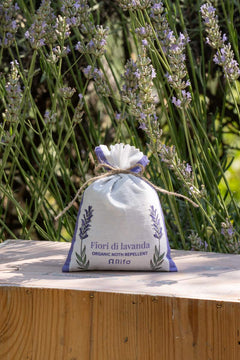They are the basis of the textile recycling activity, they are the secondary raw material of the fashion and clothing sector. We are talking about the old clothes that we throw in the containers located in our cities and that become part of the separate collection of textile waste.
In this article we want to see the journey of the separate collection of old clothes, once they are thrown into the dumpster.
What does recycling textile materials means? The ones that come from citizens' waste and what quantities are destined for recycling, reuse or disposal?
We based this blog post on a report about the recycling in Italy report of fondazionesvilupposostenibile.org, which dates back to 2019 and explains the management of waste and its recycling in Italy.
How many textile wastes do we produce in Italy?

In recent years 150 kilotons, 1,500,000 tons of textile waste, have been exported in Italy and therefore produced, which would be equivalent of about 25 kg per inhabitant.
A green and sustainable lifestyle is also based on the reduction of waste and on less but better consumption, so it is interesting to understand what happens to the textile waste produced once it ends up in the bins.
What happens to what we throw in the bins for the separate collection of textile waste?
Old clothes, shoes and accessories in Italy are collected through special bins from companies registered as environmental managers.
All this takes place in synergy between ANCI (National Association of Italian Municipalities) and CONAU, the National Association of Used Clothes and Accessories. This represents the world of companies and cooperatives active in the sector of separate collection and processing of textile waste.

Industrial recycling of old clothes
About 29% of the clothes thrown away through the bins of Italian cities are recycled.
The main destination according to the report analyzed concerns industrial rags and padding. In addition to this, the fraying, which is the basic activity for the recycling of rags.

So with those rags for industrial use we mean therefore objects that will be used to create objects for cleaning, both for industrial and for household goals.
In addition to these uses, the recycling of fabrics also concerns the spinning and re-casting of textile fibers which will become acoustic or thermal insulators.
To underline the fact that regenerating and recycling represent a need on a global level but also an opportunity for circular economy, an association whose main purpose is to protect Italian recycled textiles was born in Prato ASTRI (Italian Textile Recycled Association).
Reuse
68% of Italian municipal textile waste is for reuse. It is therefore marketed to be reused in foreign markets. Before this phase there are three steps to make the clothes suitable for reuse, specifically:
- First selection among items destined for reuse or recycling, followed by a sorting by type of item;
- Second manual selection to separate garments based on quality and create lots of value as much as possible;
- Hygiene of the garments according to the law in order to allow their marketing.
As mentioned above in the article, export is precisely an important keyword. In addition to the processing and sorting centers in Italy, which are located mainly in Prato and Naples, according to the analyzed report, a good percentage of clothes thrown away in Italy travel to the countries of Eastern Europe, North Africa and sub-Saharan Africa.
Disposal
Only 3% of the textile waste must be disposed of through an unsorted collection. However, this is an important percentage, considering the total volumes (1,500,000 tons of textile waste per year), but fortunately decreasing.
It decreases the production of waste and increases the separate collection of textile waste

According to the report, in the 10 years from 2007 to 2017, the production of textile waste went from 1169 to 1065 kilotons, thus decreasing by about 100,000 tons. Beside, material recovery has increased, from 7% to 13%.
Those are small but important signs that recycling culture and the circular economy are catching on in Italy.
Goal 2025: separate textile collection all over Europe
To conclude a look to the future. Following the approval of the European circular economy waste package, all the states will have to mandatory make the separate collection of old used clothing by 2025.
This will mean for Italy the need to reorganize and structure the chain of textile waste from people in a more linear and traceable way.
Furthermore, this objective must bring with it a reflection on the quality of the clothing that we buy, throw away and consequently can be recycled. In a circular economy perspective, all this must reward recyclable as well as recycled materials, and in any case disadvantage synthetic materials, which are of little interest to the regeneration industry.
We at Rifò want to take this path, through our products made with recycled fabrics and yarns. Visit our shop recycled clothing to discover all our production!











